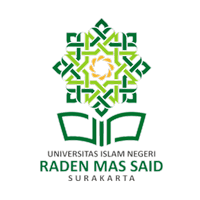Allen, I. E., & Seaman, J. (2014). Opening the curriculum : Open educational resources in U.S. higher education, 2014. Babson Survey Research Group.
Arinto, P. B., Hodgkinson-Williams, C., & Trotter, H. (2017). OER and OEP in the global south: Implications and recommendations for social inclusion. In Adoption and Impact of OER in the Global South (pp. 577–592). https://doi.org/10.5281/zenodo.1005330
Atkins, D. E., Brown, J. S., & Hammond, A. L. (2007). A Review of the Open Educational Resources ( OER ) Movement : Achievements , Challenges , and ew Opportunities. The William and Flora Hewlett Foundation. California: The William and Flora Hewlett Foundation.
Harsasi, M. (2015). The use of open educational resources in online learning: A study of students’ perception. Turkish Online Journal of Distance Education, 16(3), 74–87. https://doi.org/10.17718/tojde.46469
Katz, S. (2019). Leveraging Library Expertise in Support of Institutional Goals: A Case Study of an Open Educational Resources Initiative. New Review of Academic Librarianship, 25(4), 381–391. https://doi.org/10.1080/13614533.2019.1630655
Lin, H. (2019). Teaching and Learning Without a Textbook. The International Review of Research in Open and Distributed Learning, 20(3). https://doi.org/10.19173/irrodl.v20i4.4224
Lin, Y. J., & Wang, H. C. (2018). Using enhanced OER videos to facilitate English L2 learners’ multicultural competence. Computers & Education, 125(2), 74–85. https://doi.org/10.1016/J.COMPEDU.2018.06.005
Menzli, L. J., Smirani, L. K., Boulahia, J. A., & Hadjouni, M. (2022). Investigation of open educational resources adoption in higher education using Rogers’ diffusion of innovation theory. Heliyon, 8(7), 1–12. https://doi.org/10.1016/J.HELIYON.2022.E09885
Otto, D. (2019). Adoption and diffusion of open educational resources (OER) in education: A meta-analysis of 25 OER-projects. International Review of Research in Open and Distance Learning, 20(5), 122–140. https://doi.org/10.19173/irrodl.v20i5.4472
Puebla, P., Arias, J., & Matheu, A. (2024). Digital Literacy in Higher Education: A Multivariate Correlational Analysis of the Use of Technological Tools by University Professors. RISTI - Revista Iberica de Sistemas e Tecnologias de Informacao, 2024(E70), 448–461. Retrieved from https://www.scopus.com/inward/record.uri?eid=2-s2.0-85200776633&partnerID=40&md5=0107c632ee6cfd59df0464b44f65e280
Sheu, F.-R. (2019). Learner perceptions of open pedagogy in a psychology course: A case study on instructional design with open educational resources. In Open Educational Resources (OER) Pedagogy and Practices (pp. 67–90). https://doi.org/10.4018/978-1-7998-1200-5.ch004
Triana, Y., & Nugroho, A. (2021). Brief ELT in digital classroom for lazy creative lecturers (option after post pandemic recovery): Lecturers’ perspectives. Indonesian Journal of EFL and Linguistics, 6(1), 79–99. https://doi.org/10.21462/ijefl.v6i1.343
Triana, Y., & Zulaiha, D. (2022). Possible features of learning management system to improve writing skill. Journal of Islamic Studies and Education (JISE), 01(01), 19–22. https://doi.org/10.63120/jise.v1i3.14
Yaeger, J. L., Jones, C., & Covington, H. G. (2021). Open Solutions: Creating an OER Writing Lab. Virginia Libraries, 65(1), 1–8. https://doi.org/10.21061/valib.v65i1.604
Záhorec, J., Hašková, A., & Gunčaga, J. (2023). Teachers’ Digital Literacy as a Prerequisite for Technology-Enhanced Teaching. In Lecture Notes in Networks and Systems (Vol. 634 LNNS, pp. 607–616). https://doi.org/10.1007/978-3-031-26190-9_64
Zulaiha, D., & Triana, Y. (2023). Students’ perception toward the use of open educational resources to improve writing skill. Studies in English Language and Education, 10(1), 174–196. https://doi.org/10.24815/siele.v10i1.25797

